For our first full day, it made sense to explore Ueno Park since it is practically outside the door of the Mitsui Garden Hotel.
Our attention was caught by the sign, “Precious Coffee Moments,” so we tried that place for breakfast. I was so thrilled when the clerk understood what I said when I placed the order! Granted, I pointed at the photos on the menu and the food in the case while saying I wanted “one of these,” but she smiled and complimented my Japanese. Over the meal I struggled with the kanji characters in the logo and figured out it was really called “Ueshima Coffee Shop”.
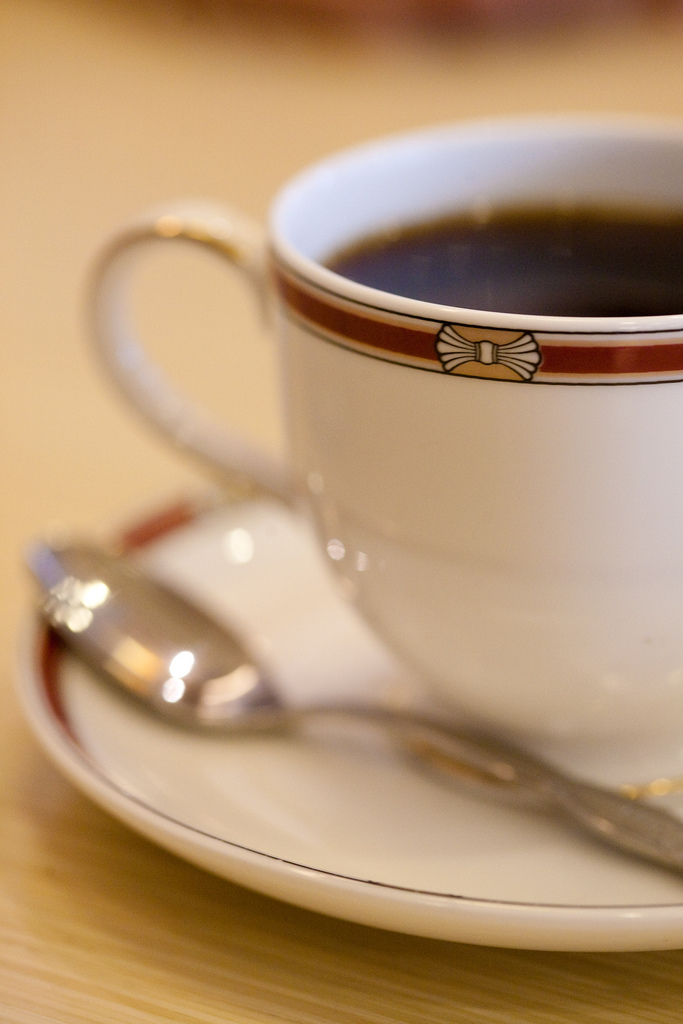
Ueshima Coffee Shop
The choices were so interesting it was hard to decide. I opted for the cinnamon coffee, and Paul got the sesame, and we kept switching back and forth. The sandwiches were good, and I kept eyeing the cakes, thinking about dessert in the evening. Having heard that good coffee is hard to find in Japan, I was pleased that we stumbled upon this place.
Cool table protector Ueshima Coffee slogan ‘Precious Coffee Moments’
Next we went for a stroll through Ueno Park towards the Tokyo National Museum. The park was spacious and beautiful with the fall colors, all red and yellow. Paul pointed out that the trees lining the path were mostly cherry, and that it must look fantastic when they are blooming in the spring. We were surprised that there were so many things to see in the park! Just a short way into our walk we noticed a red temple up a flight of stone steps on the hill and went up to explore; it was called Kiyomizu Kannon-do after the temple in Kyoto of the same name.
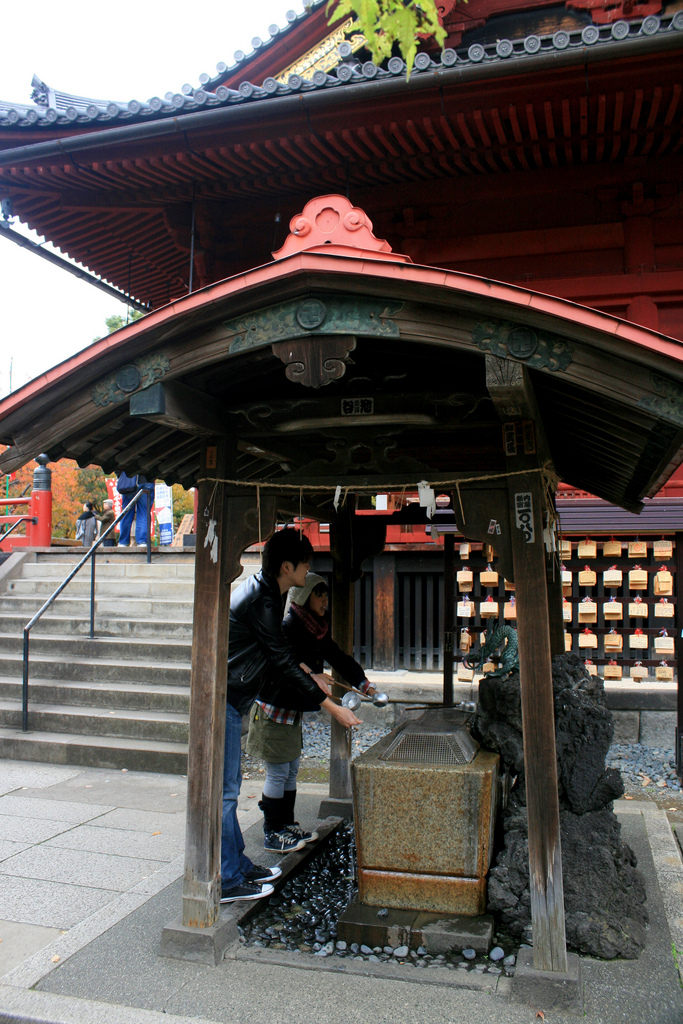
Kiyomizu Kannon-do
We continued on to the wide open space in the middle of the park, which had a huge fountain. It seemed like every other person was walking a miniature dog wearing sweaters or decked out with bows on the ears. There were a lot of big buildings on our right, museums that we were not interested in for this trip at least. On the left was the Ueno Zoo, which we were also passing by.
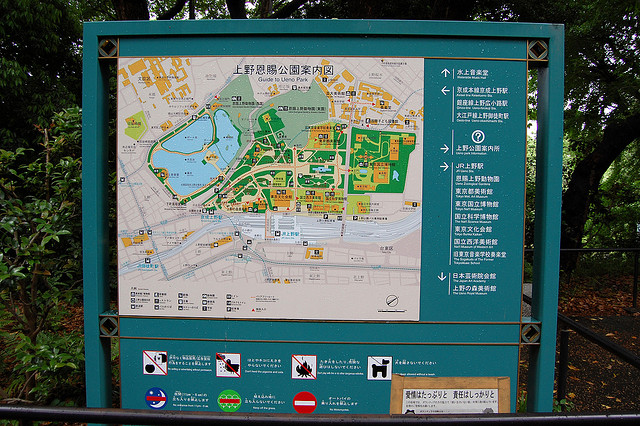
Ueno Park Map (photo: Julie Gibson/flickr)
But there was also a small flight of steps going downwards through a row of tightly-packed red torii gates. I knew these meant there was a shrine down there, so we gingerly descended, wondering if it were open to the public. There was indeed a shrine in a clearing, and we were the only ones there. The architecture and statues were beautiful.
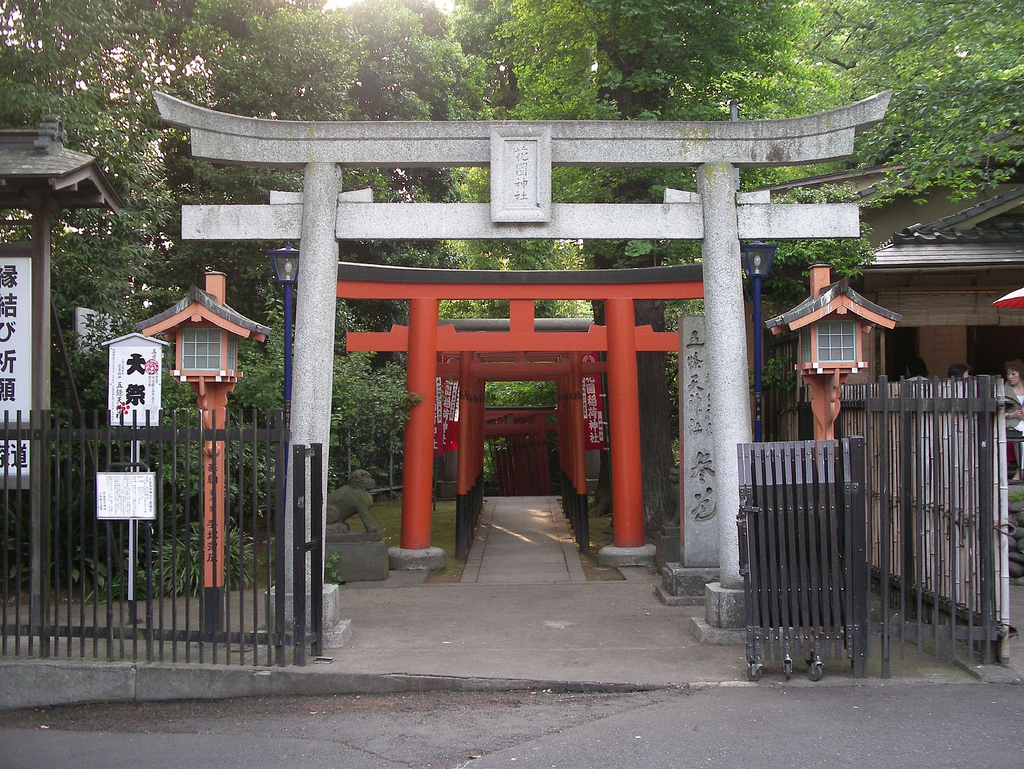
Torii in Ueno Park
Paul noticed a small hallway to the right of the shrine and stepped inside. I followed and could hear him catch his breath. The hall turned sharply, then widened into a candle-lit chamber that reeked of incense and earth. One wall had an opening covered in mesh, and there was a cave and blackness beyond. It was creepy. We felt like we had stumbled into a set for some horror movie.
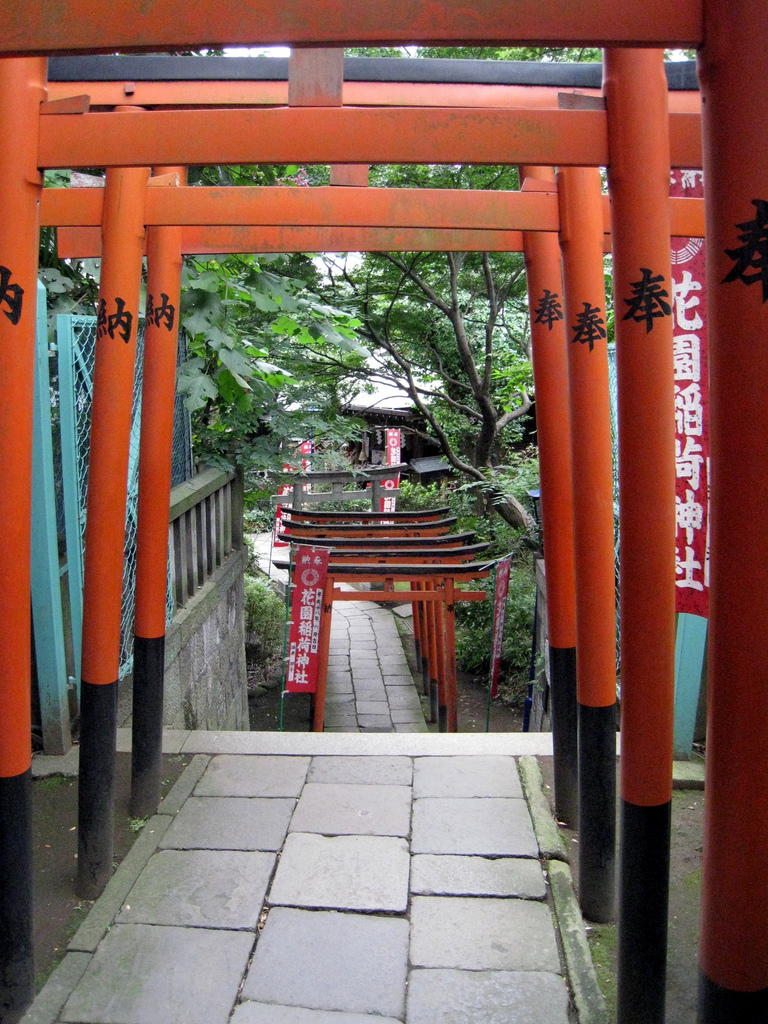
Ueno Park Torii descending
Even though we do not believe in ghosts or otherworldly things, we nodded reverently to the altar and backed out into the sunshine. What was a place like that doing here in a park where thousands of people walked every day? Probably most of them were oblivious to the shrine dedicated to something from within the earth, or maybe to the earth itself.
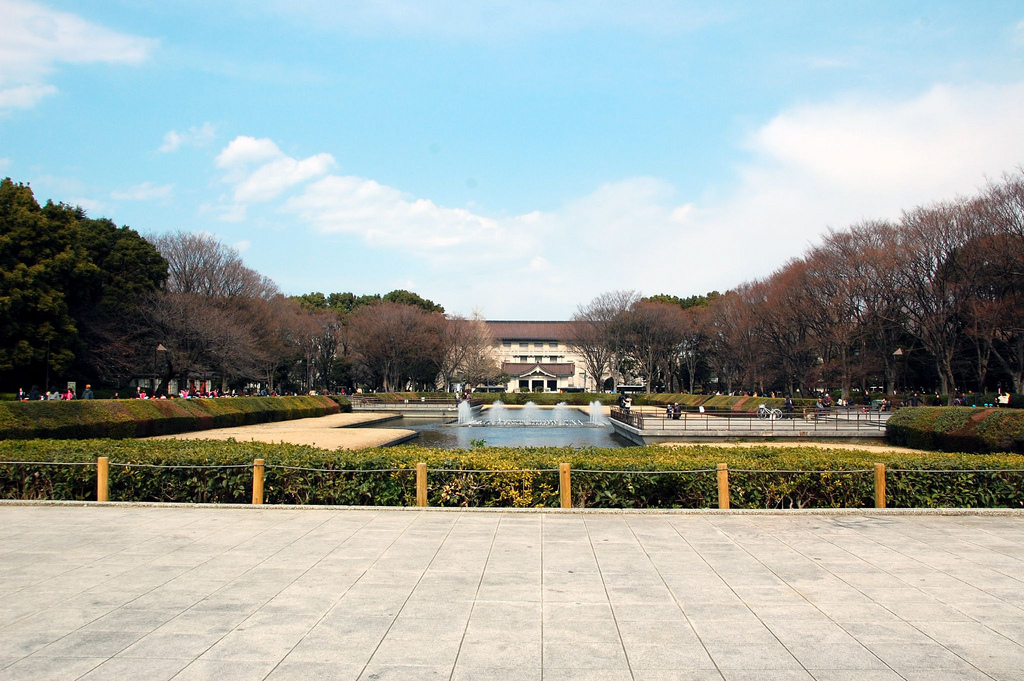
Tokyo National Museum
Glad to be in the open air, we headed back to the main fountain and the Tokyo National Museum. It was easy to find, an imposing edifice framing one side of the park. It was a seamless blend of Japanese and Western architecture, graceful and powerful.
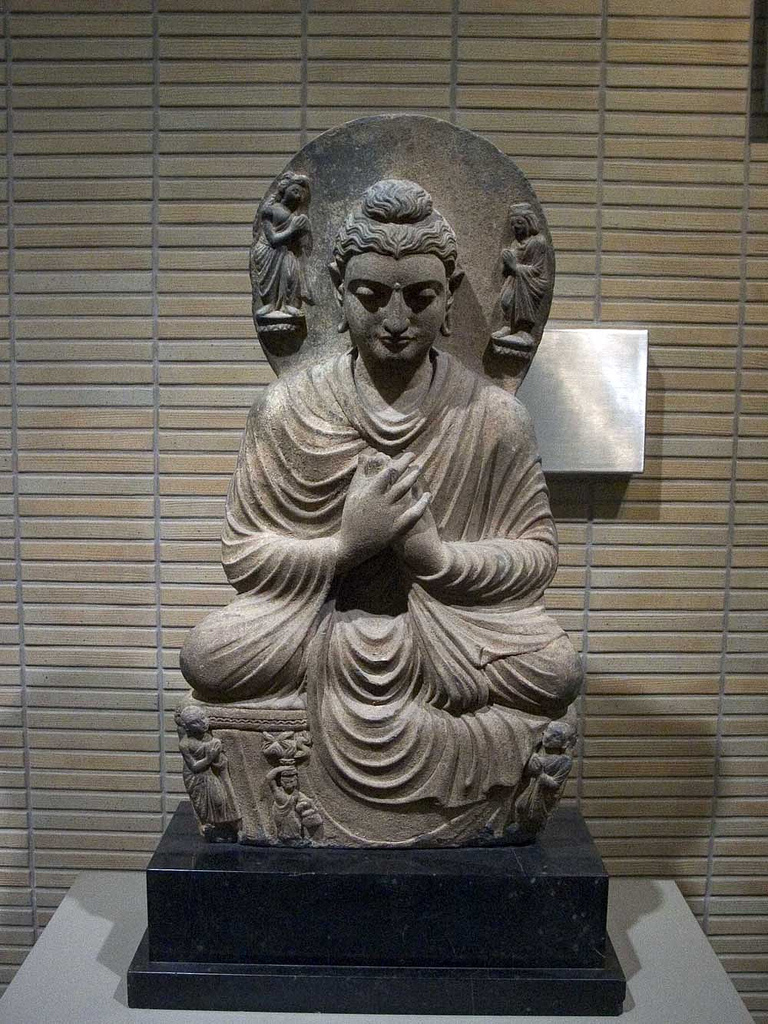
Tokyo National Museum
The beauty continued to the inside. There was a fantastic collection of Japanese artifacts from all periods, arranged by function. The handy English guide explained the important pieces, from Buddhist statues to elegant ceramics to armor. I really like the exhibit of textiles, which included bed linens, kimono, and theater costumes. Paul liked the woodblock prints. It was all tastefully arranged and lit. The order was logical and there was enough to be interesting but not overwhelming.
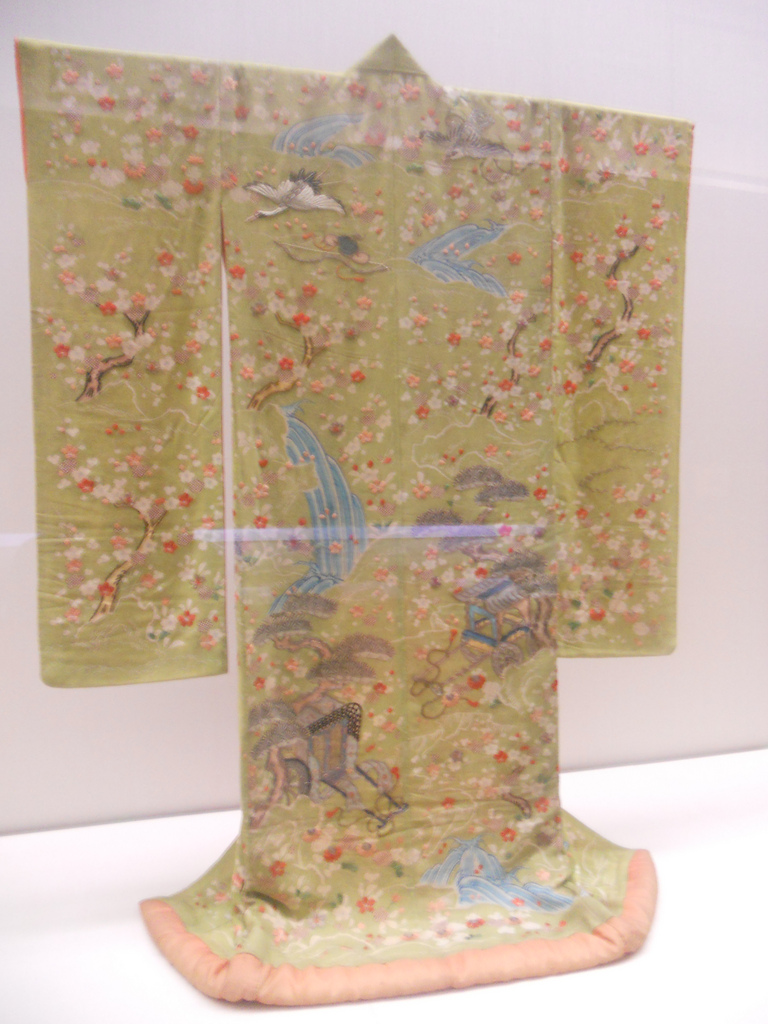
Uchikake (outer garment)
Even the gift shop had tasteful items, and the bathrooms were fitted with luxury toilets with rows of buttons that I didn’t dare push. The whole museum was clean and elegant. The time flew by without noticing.
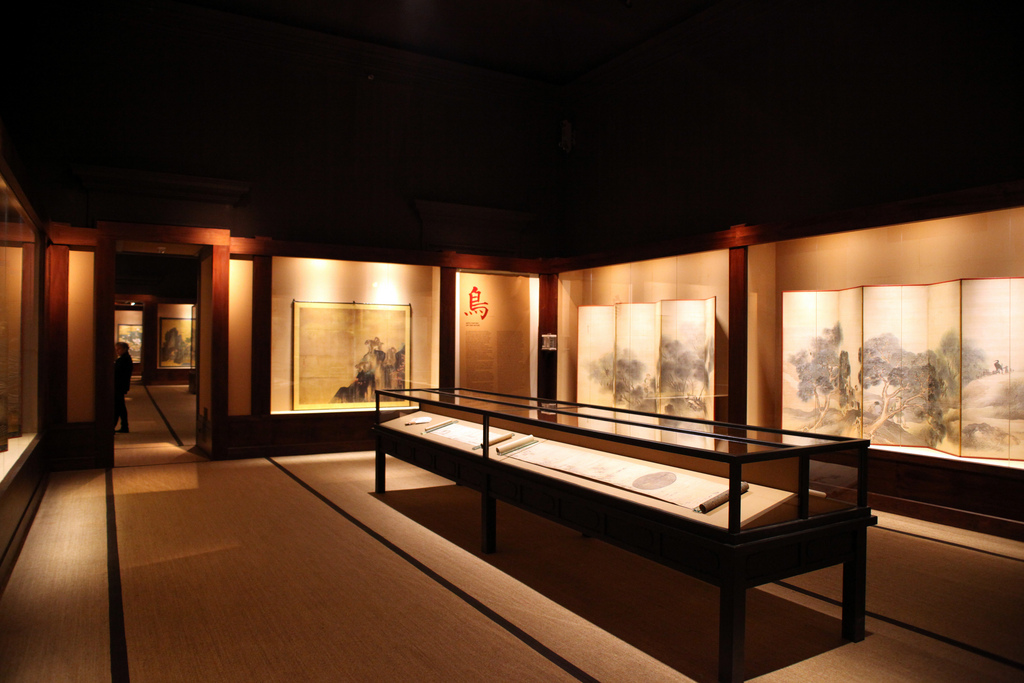
Tokyo National Museum
We had a few granola bars but were ready for a meal. We headed back through Ueno Park and were excited to find a long row of food stalls set up on the path leading to the Benten Shrine in the middle of Shinobazu Pond. Everything smelled wonderful, so we grazed our way from stall to stall. Paul was feeling daring so tried the squid grilled on a stick, and I had a generous plate of yakisoba noodles. We shared an ear of corn, and ended our meal with a bowl of tofu and vegetables simmered in a light sauce. It was all delicious and we were quite full by the time we made it to the shrine.
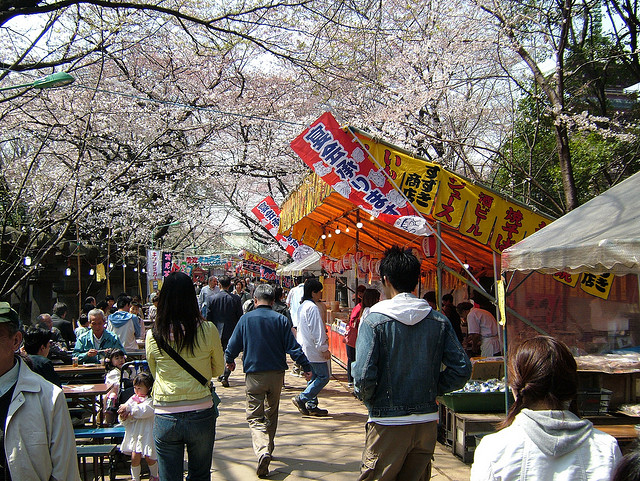
Ueno park yatai stalls (photo:Narcisseae/flickr)
The shrine was pretty, but Paul was now more interested in Shinobazu Lake itself. Or more to the point, the sea of lotus plants growing so thick you could barely see the water. A few had straggling late blooms, but most had pods. The large green leaves shifted and rustled with the wind.
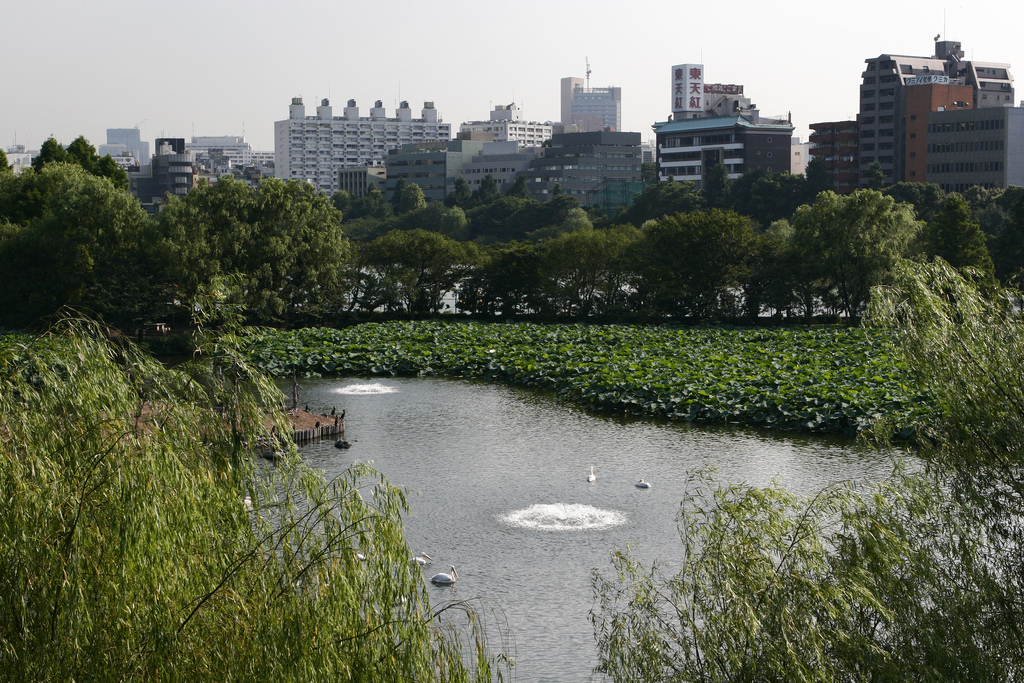
Ueno Lake with Pelicans
We got twisted around finding Kyu-Iwasaki-tei. It was listed as one of the gardens managed by the city of Tokyo, but for that we were very disappointed. It was just a big lawn surrounded by trees, though the perimeter driveway and stone walls hinted at much more. But the house was interesting beyond any of our expectations. Of course, we had heard that in the Meiji Era, Western ideas were being adopted. But this house gave us insight into what it must have felt like to live in one culture but have expectations to adopt another.
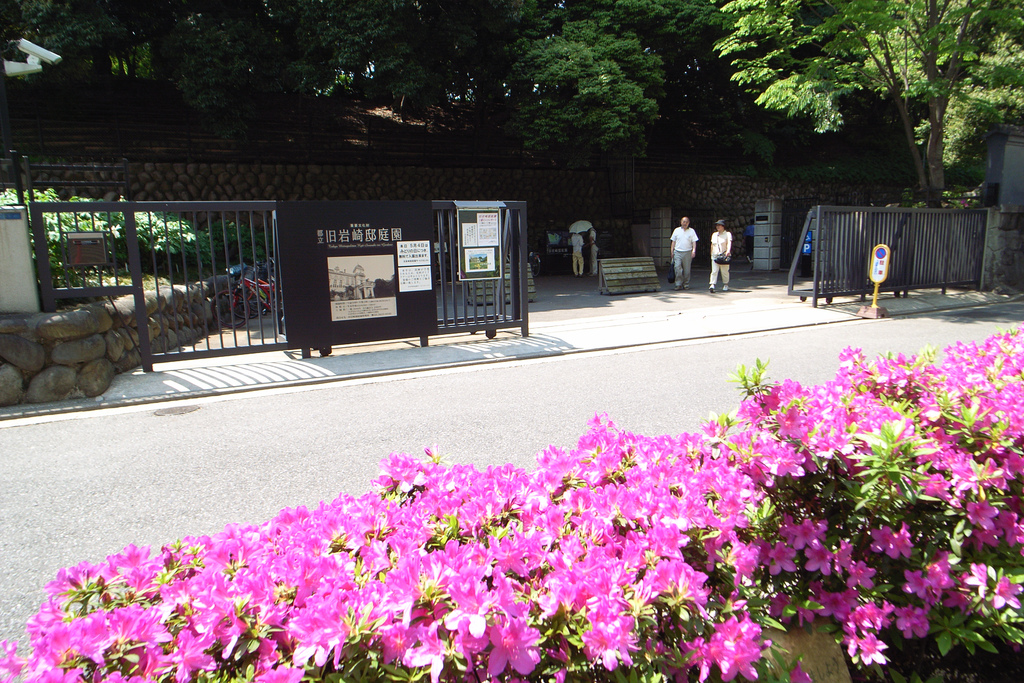
Kyu Iwasaki-tei Gardens
The curving driveway ended at a two-story yellow house that could have been transplanted from a British estate, down to the white gingerbread trim. Entering did nothing to dispel this feeling, dark wood and elegant, stately rooms. It looked like a show house, and in a way I suppose it was. The Iwasaki family, which founded Mitsubishi, was very wealthy, and built this house for entertaining guests. They never really lived in this section, they only entered when they dressed in Western clothes and had meals in the dining room using silverware and china. I can imagine the children learning to use the correct forks and spoons, squirming in the high-backed wooden seats.
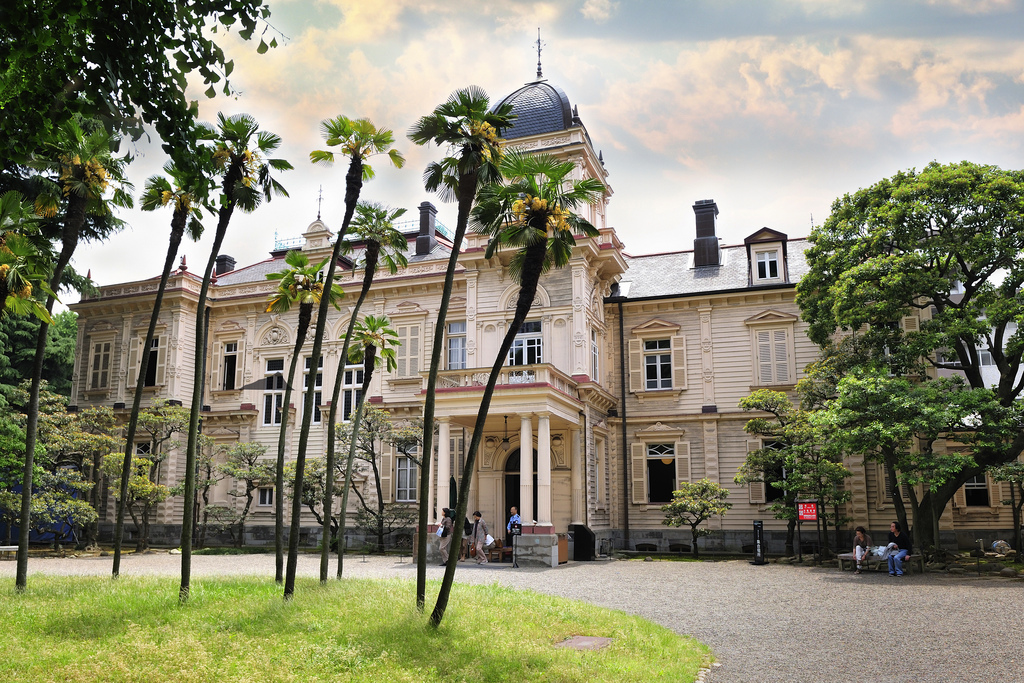
Kyu-Iwasaki-tei (Ueno, Tokyo)
There was even an underground passage that we were not allowed to walk through that led to a billiards house. It was designed like a Swiss chalet, made of heavy logs. Easy to picture men lounging and smoking cigars while discussing business deals. But it looked so out of place, a rich man’s folly.
Tokyo – Ueno Park – Kyu-Iwasaki-tei (photo: Andurinha/flickr)
The heart of the home was totally different. A small passage led from the marble entrance hallway to the right, turned a corner, and suddenly the interior was completely Japanese. There were wide, low tatami rooms adorned with only faded screen paintings. This was the real residence where the family spent most of its time. I empathized with the housewife, shedding her corset, retreating to this unpretentious space and relaxing with a cup of tea after company had gone.
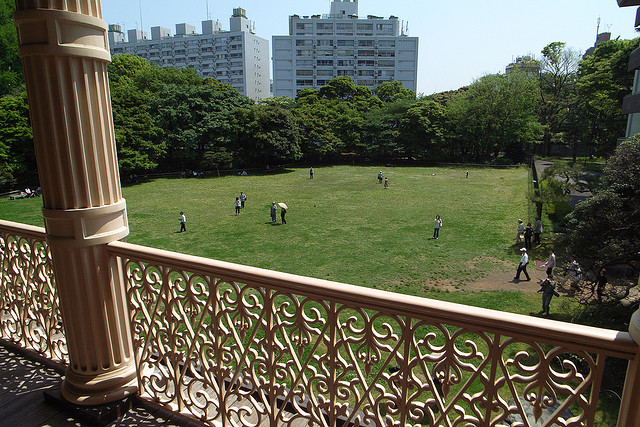
kyu-iwasaki-tei view from balcony (photo: Takanori Nakanowatari/flickr)
We spent a lot of time looking at how the homes were joined, both from the inside and out. There was a balcony where we could get a good view, but it still mystified us. I am so glad we came because the life it hinted at was so different from the cold images I had formed from my textbooks at school. These were not people who gladly threw off all trappings of their previous life to embrace Western ideas, these were people struggling to adopt a balance between the two. Successful or not, I will not judge.
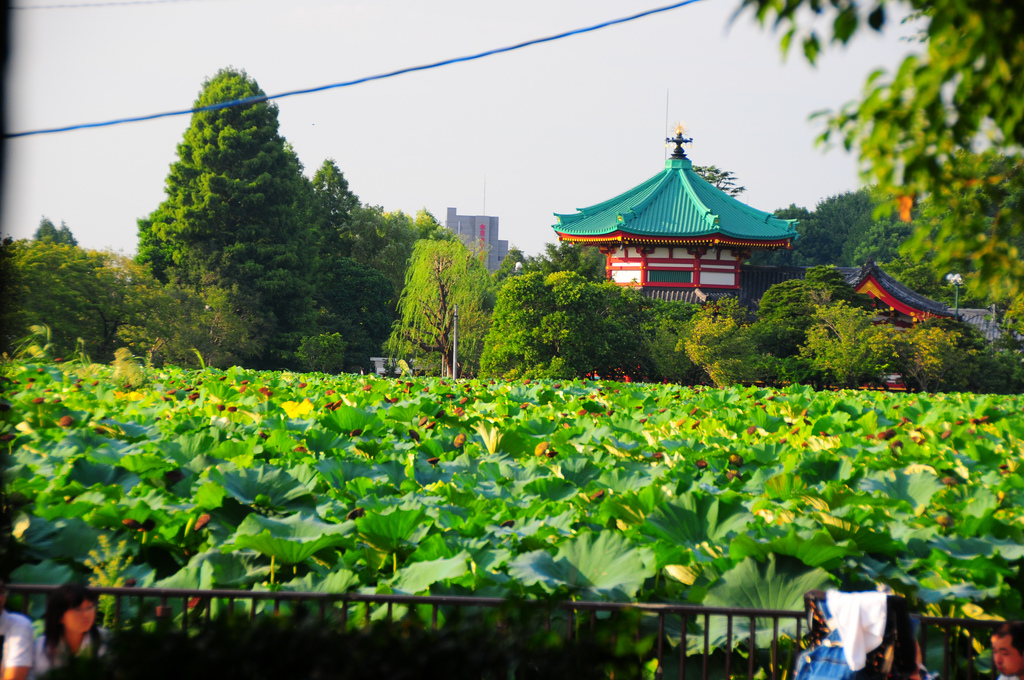
Kyu-Iwasaki-Tei Gardens
We had more time than we expected, so returned to Ueno Park for a more thorough exploration. It was surprisingly large; when we thought we had seen everything, there would suddenly be another statue, shrine, or tomb. I know we will return again in the days ahead to enjoy the plants and sunshine.
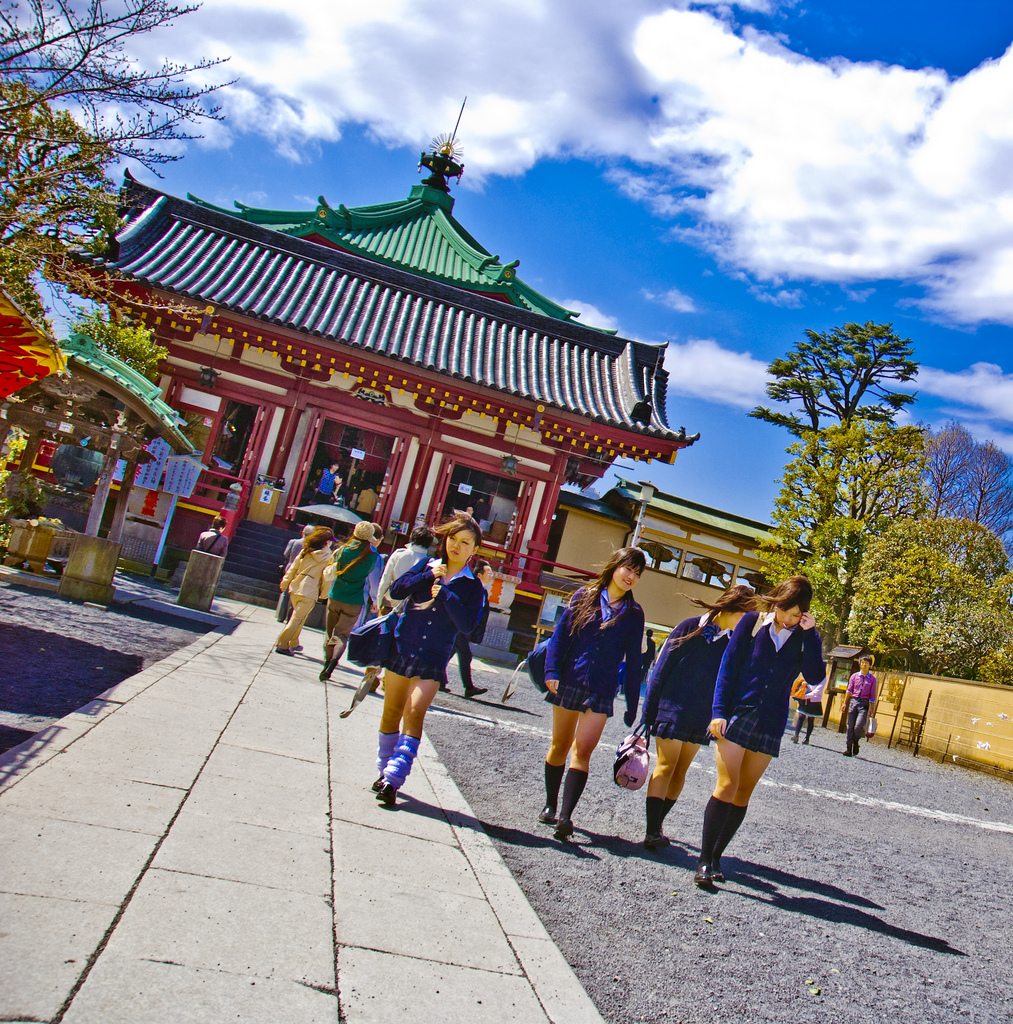
Ueno park temple zyoshikousei
Tired, we returned to the hotel for a rest before dinner, and were able to get recommendations for a restaurant. We wanted seafood for our first main dinner in Japan; we didn’t count the fast food after arriving. Isomaru-Suisan Ueno Nakamachidori-Ten Restaurant may get the award for longest restaurant name, but it was really yummy!
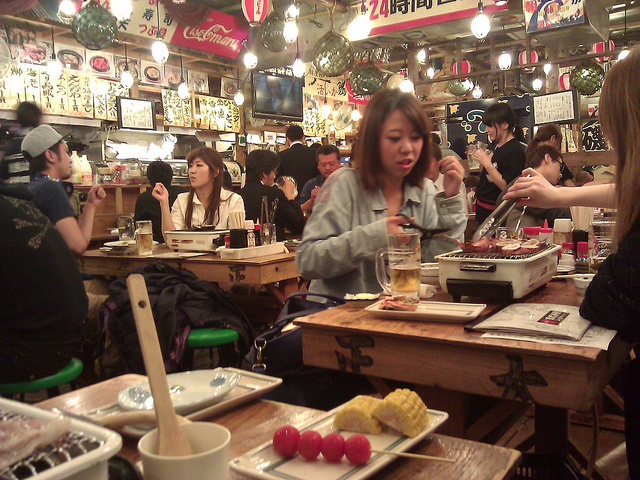
Isomaru Suisan BBQ (photo: Su–May/flickr)
We were seated at a low table in a brightly-lit room with wood walls adorned with kanji and banners. Red and white paper lanterns hung from the ceiling. We started with shochu, a Japanese alcohol like vodka, served with ice and lemon. It went well with our meal, which was scallops and squid which we cooked at a little grill on the table. It was served with donburi, a bowl of rice covered with sashimi and roe. There were not many foreigners, which added to our sense of exotic adventure.
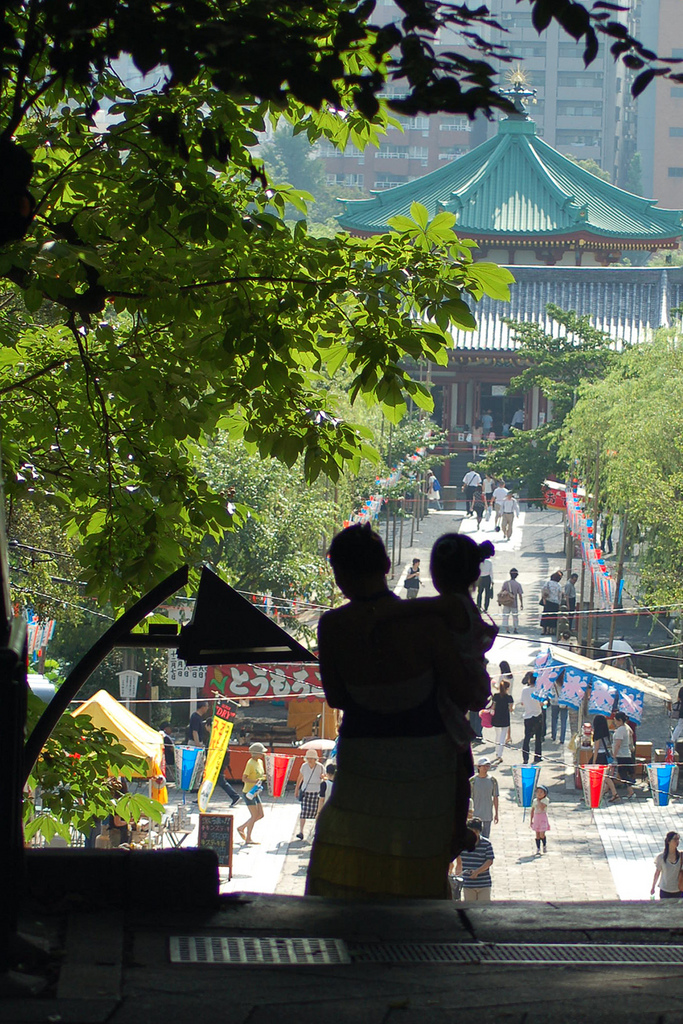
Ueno exploring
It was a delicious way to end our first day in Japan. We splurged on one more drink, enjoying the atmosphere. Then we strolled back to the hotel, drinking in the sounds and sights of Tokyo at night.
 photos by:
kennymatic &
craigemorsels,
Shadowgate,
Michael Cornelius,
kanegen,
jason-b,
woofiegrrl,
br1dotcom,
Bill Hails,
ope,
H.MASA,
mitch59,
Takadanobaba Kurazawa,
rufus.kahler
photos by:
kennymatic &
craigemorsels,
Shadowgate,
Michael Cornelius,
kanegen,
jason-b,
woofiegrrl,
br1dotcom,
Bill Hails,
ope,
H.MASA,
mitch59,
Takadanobaba Kurazawa,
rufus.kahler